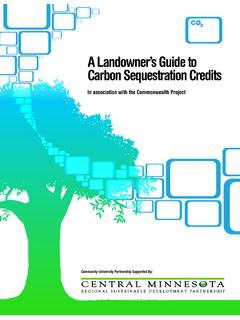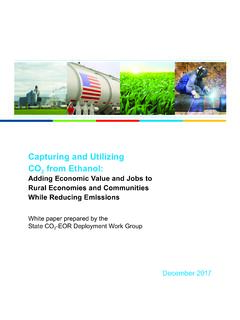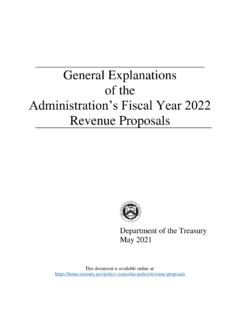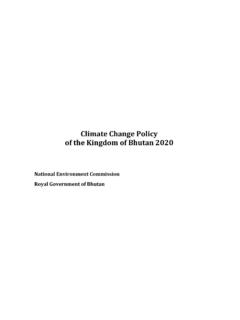Transcription of TACKLING CLIMATE CHANGE THROUGH LIVESTOCK
1 A globAl Assessment of emissions And mitigAtion opportunitiesTACKLING CLIMATE CHANGE THROUGH LIVESTOCKtAckling CLIMATE CHANGE THROUGH livestockFood and agriculture organization oF the united nationsrome, 2013 TACKLING CLIMATE CHANGE THROUGH liVestocKA GLObAL AssEssMENT Of EMIssIONs ANd MITIGATION OppORTUNITIEsRecommended citationGerber, , Steinfeld, H., Henderson, B., Mottet, A., Opio, C., Dijkman, J., Falcucci, A. & Tempio, G. 2013. TACKLING CLIMATE CHANGE THROUGH LIVESTOCK A global assessment of emissions and mitigation opportunities.
2 Food and Agriculture Organization of the United Nations (FAO), creditsCover and page 15: @SIE-MasterfilePage 1: @FAO/Giulio NapolitanoPage 5: @FAO/Noah SeelamPage 23: @FAO/Giulio Napolitano, Vasily Maximov, Jim Holmes, Florita Botts, Tariq TinazayPage 45: 59: @FAO/Ishara KodikaraPage 83: @International Telecommunication UnionThe designations employed and the presentation of material in this information product do not imply the expression of any opinion whatsoever on the part of the Food and Agriculture Organization of the United Nations (FAO) concerning the legal or development status of any country, territory, city or area or of its authorities, or concerning the delimitation of its frontiers or boundaries.
3 The mention of specific companies or products of manufacturers, whether or not these have been patented, does not imply that these have been endorsed or recommended by FAO in preference to others of a similar nature that are not views expressed in this information product are those of the author(s) and do not necessarily reflect the views or policies of 978-92-5-107920-1 (print)E-ISBN 978-92-5-107921-8 (PDF) FAO 2013 FAO encourages the use, reproduction and dissemination of material in this information product.
4 Except where otherwise indicated, material may be copied, downloaded and printed for private study, research and teaching purposes, or for use in non-commercial products or services, provided that appropriate acknowledgement of FAO as the source and copyright holder is given and that FAO s endorsement of users views, products or services is not implied in any requests for translation and adaptation rights, and for resale and other commercial use rights should be made via or addressed to information products are available on the FAO website ( )
5 And can be purchased THROUGH of ContentsForeword ixAcknowledgements xiOverview xiiAbbreviations and acronyms xviGlossary xviii1.
6 Introduction 12. Methods Introduction Global LIVESTOCK Environmental Assessment Model (GLEAM) Modelling carbon sequestration potential in grasslands 113. The aggregate picture Overall emissions Emissions by species and commodities Main sources of emissions Emissions by regions 214. Emissions by species Cattle Buffalo Small ruminants (sheep and goats) Pig Chicken Cross-cutting observations 405. Scope for mitigation Mitigation potential carbon sequestration Potential by main geographical areas 53iv6.
7 Mitigation in practice: case studies Dairy cattle production in South Asia Intensive pig production in East and Southeast Asia Specialized beef production in South America Small ruminant production in West Africa Dairy production in OECD countries Potential for productivity gains 797. Implications for policy-making A brief description of mitigation policy approaches Targeting of mitigation policies Main mitigation strategies and their policy requirements Existing policy frameworks for mitigation THROUGH LIVESTOCK Conclusions 99 APPENDIX Supplementary information on methods 103 References 109vLIST of TabLES1.
8 Sources of GHG emissions considered in this assessment 72. Summary of ruminant production systems 83. Summary of pig production systems 84. Summary of chicken production systems 95. Global production, emissions and emission intensity for cattle milk and beef 246. Global production, emissions and emission intensity for buffalo milk and meat 277. Global production, emissions and emission intensity for small ruminants 328. Global production, emissions and emission intensity for pigs 359. Global production, emissions and emission intensity for chickens 3810.
9 Estimates of emission reduction potential based on the analysis of emission intensity gap 5111. Mitigation estimates computed for mixed dairy cattle systems of South Asia 6212. Mitigation estimates computed for intermediate and industrial pig production in East and Southeast Asia 6813. Mitigation estimates computed for specialized beef production in South America 7214. Mitigation estimates computed for the small ruminant sector in West Africa 7315. Mitigation estimates computed for mixed dairy systems in OECD countries 8016.
10 Effect of maintaining animal numbers constant on the production and emission volumes estimated in four case studies 81viLIST of boxES1. Main emission pathways 202. A review of available techniques and practices to mitigate non-CO2 emissions 483. Estimating mitigation potential THROUGH analysis of the emission intensity gap 524. Main emission reduction strategies 845. Brazil s NAMA and progress in its LIVESTOCK sector 95viiLIST of fIguRES1.

















